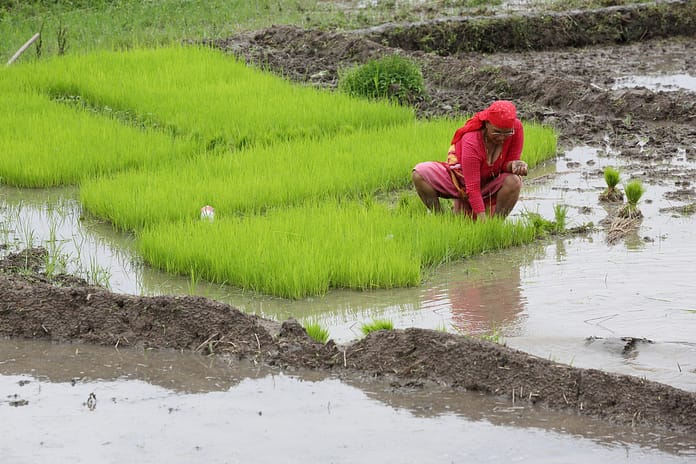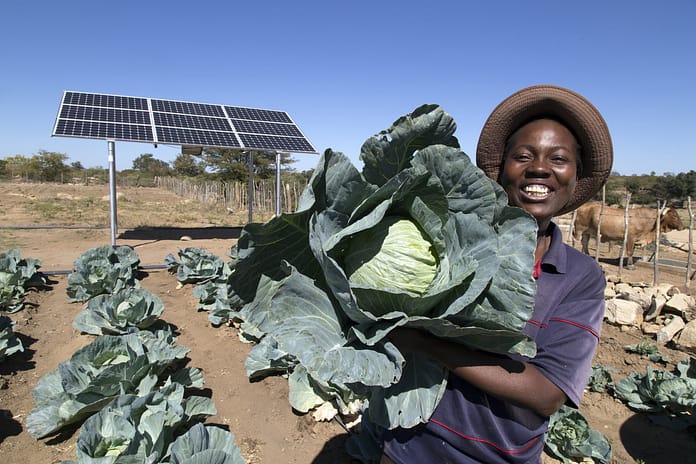Toward sustainable solar-powered pumping of groundwater for irrigation
Solar-powered pumping of groundwater for irrigation is creating keen interest worldwide in what appears to be a winning formula: clean and renewable energy that enables farmers to irrigate their fields sustainably for increased crop production and better nutrition and income generation. In India, the use of solar energy for this purpose is helping ease the load on overburdened electricity grids and reduce its carbon footprint. Other countries such as Morocco and Yemen are following suit, driven also by the need to reduce energy use in irrigated agriculture.

Photo: CCAFS/Prashanth Vishwanathan
A new paper published in the journal Energy Policy argues, however, that success depends on giving careful consideration to the policies that support solar-powered use of groundwater for irrigation. According to the study authors – Alvar Closas and Edwin Rap, researchers at the International Water Management Institute (IWMI) – policies and projects offering strong incentives to adopt solar-powered pumps may inadvertently lead to negative environmental and economic impacts. To avoid these, they suggest, requires an appropriate evaluation of the available water resources and of the possible tradeoffs between competing uses.
Solar-powered pumping is not a new idea. In use since the 1960s, it was only moderately successful for years because of high costs. More recently, rising fuel prices and the declining cost of solar panels together with technological advances have revived interest in this clean energy source to expand groundwater use in agriculture.
“In the Middle East and North Africa region, governments have been encouraging the substitution of diesel pumps with solar-powered ones through credit lines (e.g., Morocco) or by directly investing in such technology in land reclamation projects (e.g., Egypt),” note the authors of the new study.

They caution, however, that this may not be the right solution for every situation. Whether solar-powered pumps are feasible depends on various technological, economic and environmental factors. In many cases, environmental assessments assume that the groundwater supply is unlimited and that aquifers recharge at steady rates. In others, insufficient monitoring of well expansion, pumping rates and capacities results in inadequate and poorly enforced policies. Subsidies, reduced trade barriers and other financial incentives – while effective for making the technology affordable – blur the real cost-effectiveness of importing and installing the technology, causing losses and cutbacks for some firms.
Science-based feasibility assessments are essential, say Closas and Rap, to better inform national development strategies and give rise to more sustainable business models for solar-powered pumping. Subsidies tied to design regulations, water requirements and proper monitoring can help promote water-smart agriculture. In areas where groundwater has been heavily over-extracted, however, it may be best to reconsider those positive incentives.
Solar-powered pumps have the potential to revolutionize agriculture in the Middle East and North Africa as well as other dry areas around the world. But to deliver on the promise of this technology requires policies and projects that critically build on informed groundwater resource assessments and continuous monitoring, integrated water resources planning, principles of growing energy for energy grids – rather than crops, targeting subsidies to marginalized farmers, etc.
For more on IWMI’S commitment to sustainable groundwater use:
To provide guidance in making sound groundwater decisions, the Groundwater Solutions Initiative for Policy and Practice (GRIPP) was created to support the co-development of solutions for sustainable groundwater use. This IWMI-led effort aims to support sharing of successful experiences led by its partners in order to fill knowledge gaps and scale up good practices, including appropriate uses of solar energy.
















